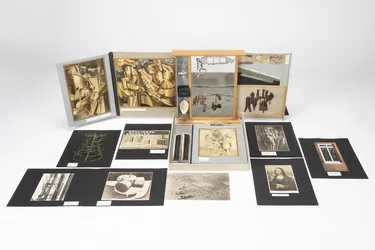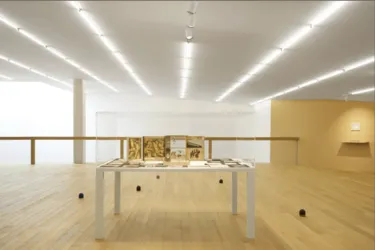Marcel Duchamp

About the Artist
Henri-Robert-Marcel Duchamp was born in Blainville, in northern France, in 1887. Considered one of the most influential artists of 20th-century art, he is regarded as the father of Dadaism and Conceptual Art. He exhibited for the first time in 1909 at the Salon des Indépendants and the Salon d'Automne in Paris.
The artist, associated with the Parisian Dada group and surrealist artists, occasionally signed his works as Rrose Sélavy, his female alter ego. A French national chess master, he lived between France and the United States until his permanent move to New York in 1942.
"Using painting, using art, to create a modus vivendi, a way of understanding life; that is, for the time being, of trying to make my life into a work of art itself, instead of spending my life creating works of art in the form of paintings or sculptures”, he declared in 1966.
Duchamp died in Neuilly-sur-Seine, near Paris, in 1968.

De ou par Marcel Duchamp ou Rrose Sélavy (commonly known as Boîte-en-valise or Box-in-a-valise), Series C
1958
The complete set of 68 miniature replicas and reproductions of works by the artist, mounted on and contained in the original cardboard, paper, wood and cloth-covered box
Conceived in the late 1930s, this work represents an ideal and portable museum capable of containing replicas and miniatures of all the works the artist had created up to that date. A portable museum, but also the embodiment of the artist’s body, where each work is like a limb, a part of his limbs. Finally, it plays the role of an idea of home and homeland for the man in exile, forced like so many to flee Europe during the Second World War. Each element is reproduced in an edition with ancient and artisanal techniques such as collotype and pochoir coloring, which infuse a touch of uniqueness to each copy.
The version on display is part of Series C, assembled in Paris in 1958 by Iliazd, a poet, bibliophile,and artist of Georgian origin.